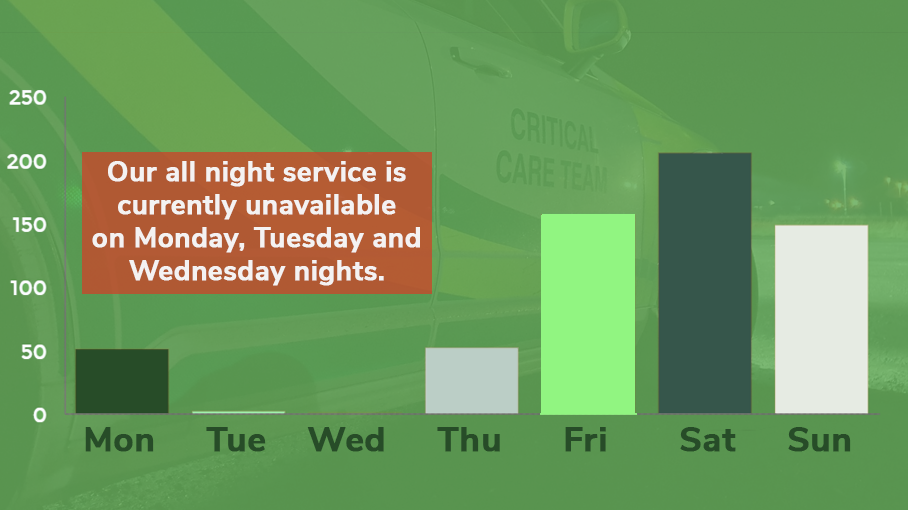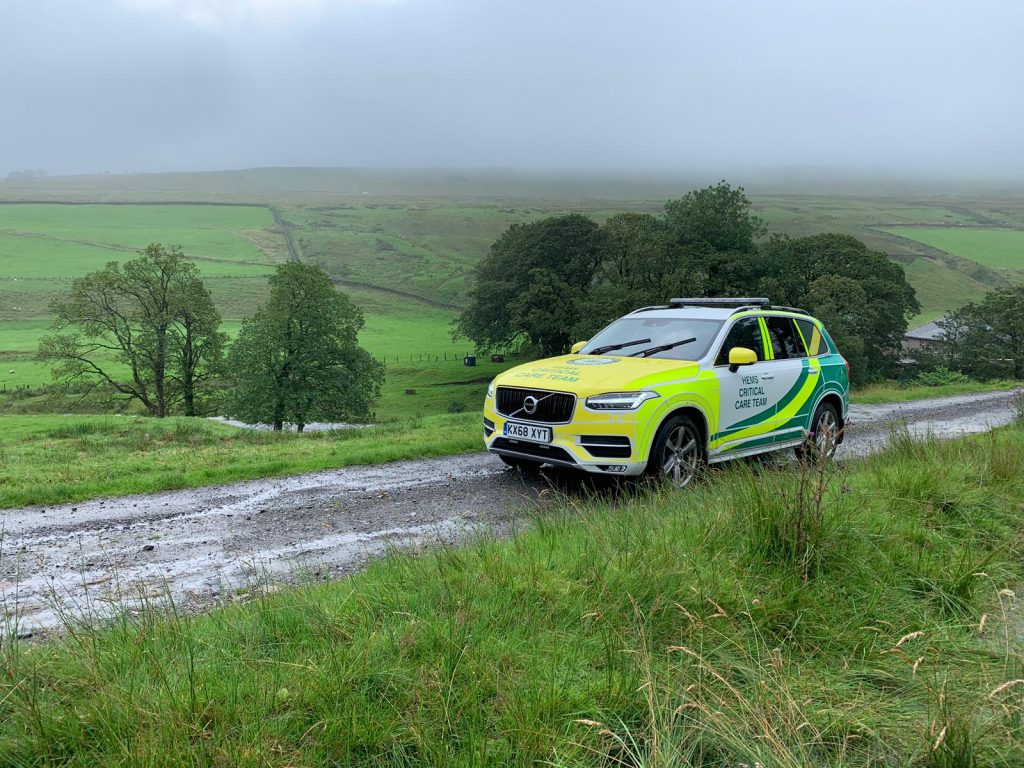Helicopters are the stars of our fleet. But last year, our cars were even busier. In this blog we look at how that happened and how the cars could be doing even more.
If we asked a random member of the public to give us the image they most commonly associate with the Great North Air Ambulance Service, I can guarantee they would choose a helicopter. We are, after all, an air ambulance.
But the way we carry out our work has changed dramatically over the past few years. Looking back at the 2019 statistics, the numbers speak for themselves – of the 1680 incidents we responded to throughout the year, we flew to 799. The other 881 responses were in our rapid response car, with 618 of those happening between the hours of 8pm and 8am.


The helicopter is vital and will remain so. Through the day, it is the best way of flying our expert clinicians to the scene of the most seriously ill and injured patients in our region. It is often the best way of then transporting the patient on to hospital. But due to aviation rules, which are rightly in place to ensure the safety of passengers and crew, the work of air ambulances is much more limited in the hours of darkness.
By looking at hospital admissions data, we know the bulk of the patients overnight come from urban centres. And therefore we use a car, which can be deployed mainly in our towns and cities, utilising the same critical care team that is present on our aircraft with all the same essential equipment.
Due to efficient ‘tasking’ (the complex business of requesting our attendance at an incident), we are also having a significant impact in rural areas as well, where we see much fewer call outs but where there is still a need for our services through the night.
We want to become a 24/7 service. Click to help us.
It’s worth emphasising again how the service is reserved for the most seriously ill and injured patients. This is because in the whole of the North East, through the night, the GNAAS doctor is the trauma doctor on shift throughout the region. The interventions they enable – blood transfusions, surgeries and anaesthetics, to name a few, need to be preserved for those who need them most. So we have to be selective in order to maximise our impact. It’s difficult to humanise a list of numbers, but each of those 618 incidents above involved someone’s personal crisis; a frightening, life-threatening experience that we were fortunate enough to be able to respond to.
Despite all this, this service only operates fully on Thursday through Sunday nights. We know it needs to be out there patrolling, able to respond quickly in the immediate aftermath of an incident occurring, but we cannot afford to pay for the additional three nights.
That’s why, in late 2019, we launched our Critical Care 24/7 Appeal to raise the £310,000 we need to extend the service out over the whole week. This would mean our team were available around the clock, 365 days a year. And we know that will make a difference.


Our system is working, we just need more money to expand it out. And the sooner we get that money, the sooner we can bring equality to the standard of care offered in the North East. We are even looking at how the service can translate to Cumbria as well, which is a different proposition in terms of its population density and its road network. But part of our project involves running a trial in the county to see how it would work.
We know this will work. We know lives will be saved and suffering eased. We just need your support to make it a reality.
Click to help us to become a 24/7 service.
Incident type – overnight shifts in 2019:
| Incident type | Number of incidents responded to |
| Assault | 161 |
| Burns | 14 |
| Cardiac Arrest – Medical | 125 |
| Cardiac Arrest – Traumatic | 13 |
| Drowning | 3 |
| Fall | 96 |
| Industrial | 1 |
| Medical | 23 |
| Other | 14 |
| RTC | 124 |
| Self harm | 41 |
| Sport & Leisure | 2 |
| Transport – other | 1 |
| Total | 618 |



